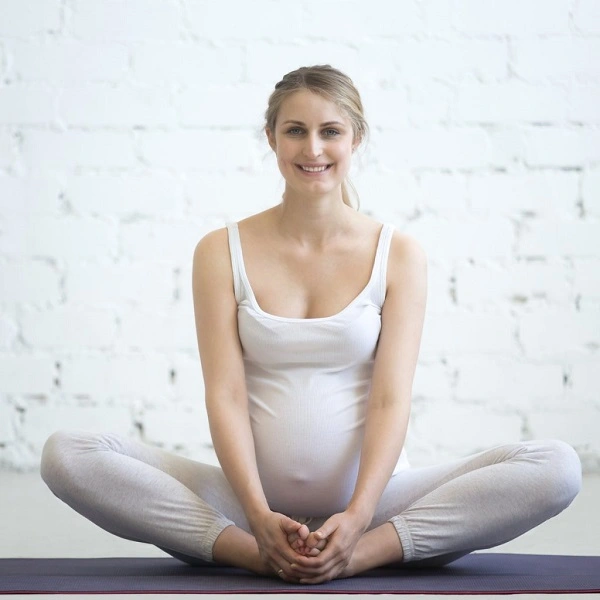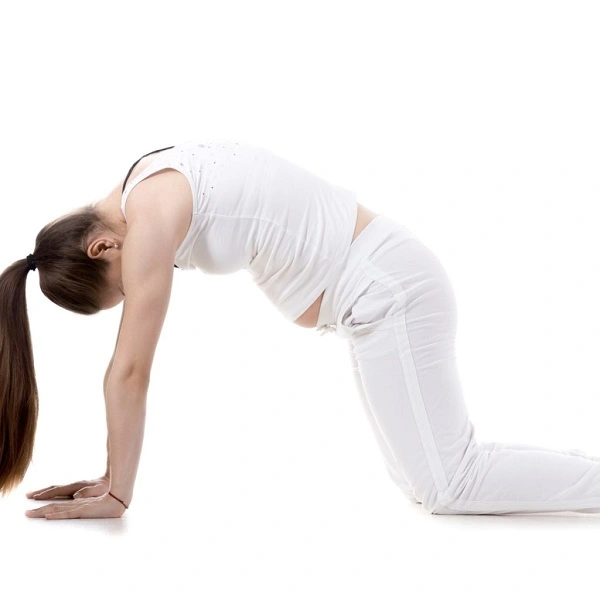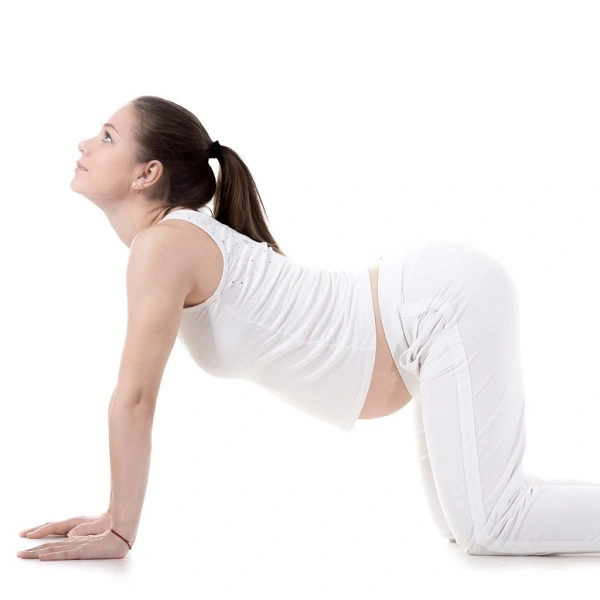Yoga for easier labor
Yoga, a practice used for centuries by women and men around the world, is gaining popularity among expecting mothers. In this article, I will briefly introduce Yoga and explain how it helps mothers to ease their labor.


What is Yoga?
Yoga is a holistic practice for the body and the mind, which helps us reach the balance between both through physical postures, breathing techniques, meditation, and relaxation.
Benefits of Yoga
- Physical benefits:
Yoga gives your body strength, flexibility, and mobility, all elements that are essential for a pregnant woman.
- Mental Benefits:
Practicing Yoga calms the mind, cultivates patience, and encourages better focus and balance. This makes Yoga an incredibly supportive practice during pregnancy since it is a period filled with changes; Yoga will help a pregnant woman to have more acceptance of the changes, mental and physical, and to be mentally prepared for the journey, and the ultimate destination, which is labor.
- Reducing anxiety and stress:
The breathing and meditation techniques used in Yoga help with the reduction of stress and anxiety. So, it is a much-needed practice, especially in an unfamiliar situation such as labor.
How does Yoga help a pregnant woman?
- Preparing the body for the birthing process through different exercises specifically designed for pregnancy.
- Using a variety of breathing techniques to calm the mind and help the mother to be more present and focused. Specific breathing techniques are used to prepare for labor, such as breathing exercises with longer exhalation.
- Preparing the mind through meditation and visualization techniques.
- Using specific exercises that could help improve certain conditions developing, sometimes only during pregnancy, such as sciatica.
Is it safe during pregnancy?
Yoga is very safe during pregnancy. It is more desirable and helpful. Prenatal Yoga is particularly designed to prepare the body for pregnancy and the birthing processes. However, the woman must get a clearance from her doctor to do Yoga to ensure that she has no complications that could potentially prevent her from practicing this practice. Even with the presence of some complications or special conditions, Yoga considers them and makes different adjustments to the practice to suit the specific issues that a woman might have during pregnancy such as pelvic girdle pain, nausea, or placenta previa.
It is noteworthy that practicing prenatal Yoga does not require previous experience. Many women start Yoga during pregnancy, but they fall in love with the practice, get attached to it, and continue even after delivery.
Preparing the body for labor
Yoga well prepares the woman’s body for labor through the different poses that she is trained to do throughout pregnancy. In addition, Yoga contributes to the mental preparation for and acceptance of the uncertainty associated with the birthing process. In prenatal classes, we use visualizations, breathing techniques, meditation, and support women to practice kindness towards themselves and their babies. It is worth mentioning that even though some women continue to do Yoga during pregnancy, they can end up with a birthing process they didn’t visualize or desire. In this case, Yoga helps the woman to accept and surrender to whichever way her baby was birthed, knowing deep down that the journey to motherhood is precious, irrespective of how the baby came out into this world.
Reducing labor pain
Labor is known to be naturally painful, and I cannot claim that Yoga is going to fully eliminate labor pain. However, being mentally trained to accept pain, and deal with it as it comes helps a lot in the pain reduction because a lot of this process boils down to the mental state. Furthermore, being physically trained through prenatal Yoga exercises strengthens the woman’s body and in turn, helps in the pain reduction and lessens the strain of childbirth on the body.
Yoga poses that help ease labor
- Malasana (Deep-seated Squat)
This pose which is done frequently throughout the prenatal Yoga journey helps relax and lengthen the pelvic floor muscles and stretch the perineum. This is the position that women should be giving birth in! So doing this during labor will help as well.

- Utkata Konasana
This pose strengthens the legs and opens the hips.

- Baddha Konasana (Butterfly)
This pose gently stretches the pelvic floor and inner thighs and uses gravity to help the baby to descend.

- Cats/ Cows
This stretch eases any discomfort and decreases lower back pain, especially in the first stage of labor.


- Wall lean/ shoulder stretch
This is a natural position for many women to assume during labor. The leaning forward action takes the pressure off the lower back and many women innately shift their hips around. This can be done with the help of the doula, or the husband.

source www.mother.ly
These are the major poses that help prepare the body for labor. In addition, the mother must continue to do exercises, throughout the pregnancy, to strengthen the pelvic floor, to avoid any postpartum issues caused by pelvic floor dysfunction. Improved bladder control, strengthening pelvic organ support during labor, and reduced risk of bowel inconsistency are a few benefits, among many, of consistently doing the pelvic floor exercises throughout pregnancy.
Find out What is Tokophobia and how can you overcome it






